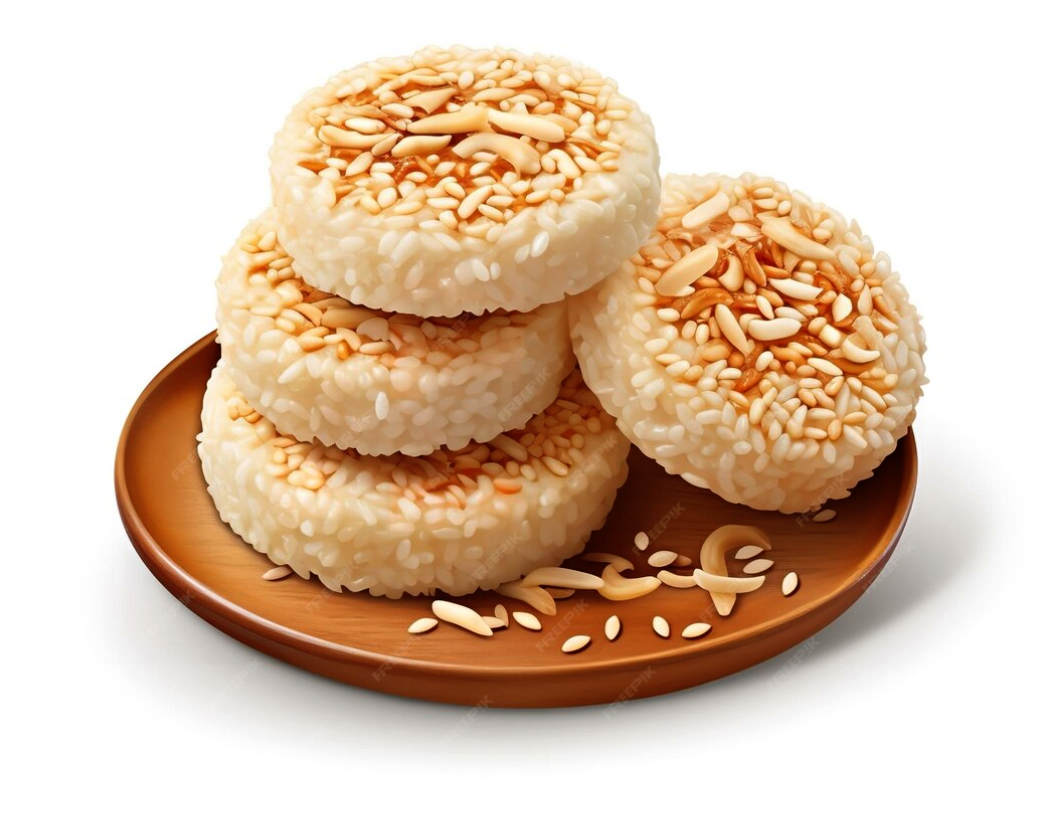Japan is known for its unique and diverse culinary traditions, and one of its most iconic food items is the humble rice cake. MOCHI Japanese rice cakes are more than just a snack; they represent centuries of tradition, culture, and innovation. Whether enjoyed as a sweet treat during festivals or a savory snack with tea, rice cakes hold a special place in Japanese hearts.

What Is a Japanese Rice Cake?
A Japanese rice cake, commonly referred to as “mochi,” is a soft, chewy, and sometimes sticky delicacy made primarily from glutinous rice. But “mochi” isn’t the only type of rice cake. Japan boasts a variety of rice cakes, each with its own flavor, texture, and cultural significance.
A Brief History of Japanese Rice Cakes
The history of rice cakes in Japan dates back over a thousand years. Originally, mochi was made as an offering to the gods in religious ceremonies. Over time, it evolved into a popular food item, especially during New Year’s celebrations, where the process of making mochi (called “mochitsuki”) became a communal activity.
Types of Japanese Rice Cakes
There are many different types of Japanese rice cakes, and each offers a unique taste and texture. Let’s explore some of the most popular ones.
Mochi
Mochi is undoubtedly the most famous type of rice cake. Soft, chewy, and slightly sweet, mochi can be filled with a variety of ingredients like sweet red bean paste, ice cream, or fruit. Mochi is enjoyed both as a dessert and as a savory snack.
Dango
Dango is a type of rice dumpling typically served on skewers. It’s chewy, slightly sweet, and often topped with sauces like soy sauce or sweetened with sugar syrup. Dango is particularly popular during festivals.
Senbei
Senbei are crispy, savory rice crackers that come in a variety of flavors. They can be sweet, salty, or coated with seaweed. Senbei are often enjoyed with tea and are a popular snack in Japan.
Ingredients Used in Japanese Rice Cakes
The key ingredient in all Japanese rice cakes is glutinous rice, also known as “sticky rice” or “sweet rice.” Other ingredients and flavorings vary depending on the type of rice cake.
Glutinous Rice
Glutinous rice, known for its sticky texture when cooked, is essential for making rice cakes. This rice variety provides the signature chewy and dense consistency found in mochi and other rice cakes.
Sugar and Fillings
Many rice cakes, especially mochi, are sweetened with sugar. Fillings like sweet red bean paste (anko) or fresh fruit are also popular.
Seasonings and Toppings
Depending on the type of rice cake, seasonings like soy sauce, sesame seeds, or seaweed may be added. For example, savory senbei rice cakes are often seasoned with soy sauce or wrapped in seaweed.
The Importance of Mochitsuki: The Mochi-Making Ceremony
Mochitsuki, or the traditional way of making mochi, is a time-honored ceremony in Japan. This process involves pounding steamed glutinous rice with a large wooden mallet until it forms a smooth and sticky dough. It’s a labor-intensive process but one that’s filled with cultural significance, especially during New Year’s celebrations.
How Japanese Rice Cakes Are Made
Traditional Methods
In the traditional method of making mochi, the rice is steamed and then pounded until it becomes a smooth, sticky dough. This dough is then shaped by hand into round cakes.
Modern Techniques
Today, many people use machines to make mochi, especially in commercial settings. The rice is still steamed, but machines take over the laborious task of pounding, making the process quicker and more efficient.
Popular Variations of Japanese Rice Cakes
Japanese rice cakes come in many flavors and forms. Here are some popular variations:
Sweet Mochi
Sweet mochi is often filled with red bean paste, fruit, or even ice cream. It’s a popular dessert both in Japan and abroad.
Savory Senbei
Senbei rice crackers are usually savory, but they can also be sweet. Some are brushed with soy sauce and grilled, while others are coated with sugar.
Dango Skewers
Dango is a chewy rice cake served on skewers, often topped with a sweet soy glaze or sesame seeds. It’s a popular street food during festivals.
Japanese Rice Cakes in Festivals and Celebrations
Rice cakes are a staple in many Japanese festivals and celebrations. Mochi, in particular, is commonly eaten during New Year’s, while dango is a favorite during Hanami (cherry blossom viewing).
Health Benefits and Nutritional Value of Japanese Rice Cakes
Rice cakes, especially mochi, are a good source of carbohydrates and provide energy. While some variations are high in sugar, others, like senbei, can be a healthier, savory option.
How to Enjoy Japanese Rice Cakes: Serving Suggestions
Rice cakes can be enjoyed in many ways. Sweet mochi can be eaten as is or paired with green tea, while savory senbei makes a great snack with a hot cup of matcha.
Common Mistakes to Avoid When Making Rice Cakes
One common mistake when making rice cakes is not steaming the rice long enough, resulting in a texture that’s too firm. Another mistake is overworking the dough, which can make the cakes too tough.
Where to Buy Authentic Japanese Rice Cakes
Authentic Japanese rice cakes can be found in specialty Japanese stores, online retailers, or Asian grocery stores. Some places even offer freshly made mochi during festivals.
Japanese Rice Cakes Around the World
Japanese rice cakes have gained popularity worldwide, especially in countries like the US and Australia, where you can find mochi ice cream and other variations in many supermarkets.
Conclusion
Japanese rice cakes are a delicious and culturally rich food that comes in many different forms. From sweet mochi to crispy senbei, each type of rice cake offers a unique experience. Whether you’re enjoying them during a festival or as a snack, rice cakes are a true symbol of Japanese tradition and culinary innovation.
FAQs
- What is the most popular type of Japanese rice cake?
- Mochi is the most popular and widely recognized type of Japanese rice cake.
- Are Japanese rice cakes gluten-free?
- Yes, most Japanese rice cakes made from glutinous rice are gluten-free, but always check labels for any added ingredients.
- How is mochi traditionally made?
- Mochi is traditionally made by steaming glutinous rice and then pounding it with a large wooden mallet until it becomes smooth and sticky.
- Can you make rice cakes at home?
- Yes, rice cakes can be made at home, especially with the help of modern kitchen tools like a rice cooker or mochi-making machine.
- What is the best way to store Japanese rice cakes?
- Store rice cakes in an airtight container at room temperature for a short time. For longer storage, refrigerating or freezing is recommended.






























